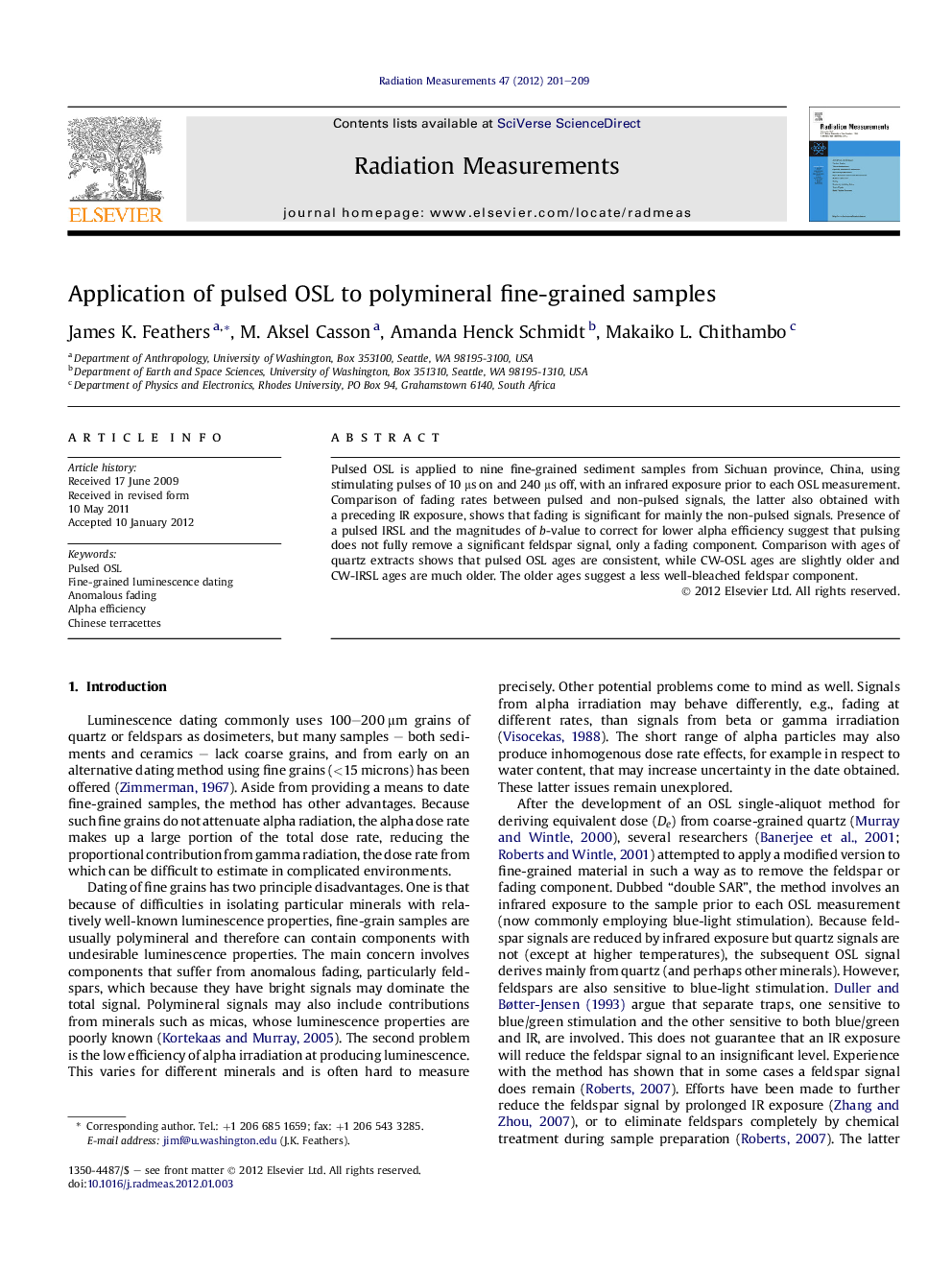| Article ID | Journal | Published Year | Pages | File Type |
|---|---|---|---|---|
| 1888557 | Radiation Measurements | 2012 | 9 Pages |
Pulsed OSL is applied to nine fine-grained sediment samples from Sichuan province, China, using stimulating pulses of 10 μs on and 240 μs off, with an infrared exposure prior to each OSL measurement. Comparison of fading rates between pulsed and non-pulsed signals, the latter also obtained with a preceding IR exposure, shows that fading is significant for mainly the non-pulsed signals. Presence of a pulsed IRSL and the magnitudes of b-value to correct for lower alpha efficiency suggest that pulsing does not fully remove a significant feldspar signal, only a fading component. Comparison with ages of quartz extracts shows that pulsed OSL ages are consistent, while CW-OSL ages are slightly older and CW-IRSL ages are much older. The older ages suggest a less well-bleached feldspar component.
